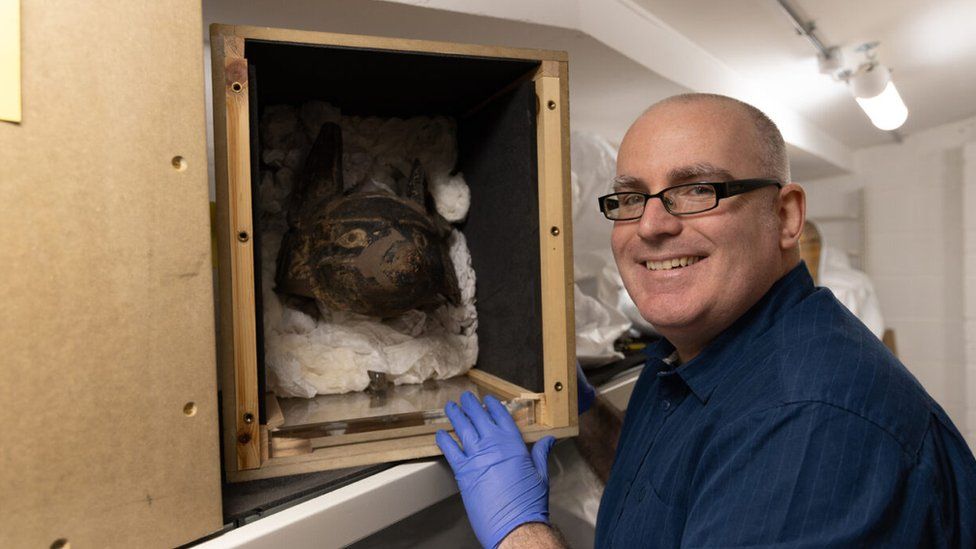Hundreds of rare Egyptian artefacts dating back as far as 7,000 years ago are set to be displayed until May.
Swansea University’s Egypt Centre will host 800 items in a collection on loan from Harrogate Museum for three years.
The university’s experts will analyse the objects, in the hope of improving understanding of antiquity.
The artefacts range from 1,400 to 7,000 years old, and come from across the ancient Egyptian world.
But despite their disparate origins, the Egypt Centre’s curator, Dr Ken Griffin, said they were all linked by the Egyptians’ desire for their names to be recalled by future generations.
He said that desire was the reason the first exhibition of 30 items had been entitled Causing Their Names to Live.
“The thing which jumps out at you is the number of artefacts which bear phrases around a variation of causing their name to live,” he said.
“There’s a popular misconception that the Egyptians were obsessed with death, but the opposite is true. Everything was about being remembered on earth, so that their souls would live on in the afterlife.”
He added that the collection dispelled the myth that tombs were laden with curses in order to keep people out.
“They wanted people to visit to promote these acts of remembrance,” he said.
“Many inscriptions offer inducements to visit, to the effect of: ‘If you make an offering at my tomb, I’ll put in a word for your own soul with the gods in the afterlife’.
“The curses only referred to anyone who sought to desecrate or rob a tomb; then they could frequently be threatened with being stung by a scorpion or eaten by a crocodile.”
The collection includes: coffin fragments; funeral cones which would have stood at the entrance to a tomb; sculptures of the person’s living form, known as shabti; and stelae, carved drawings of events from their life.
The centrepiece is a seated stone statue of Senetre, daughter of Egyptian scribe Nebamun, bearing an inscription urging people to remember his daughter.
Dr Griffin said: “This statue tells us two things. Firstly, for high-ranking families like Nebamun’s, the acts of remembrance were also about dynastic control.
“We think we’re into ancestry these days…the Egyptians could recite 10 or 15 generations of their lineage, it was a means of enforcing their right to rule.
“Secondly, Senetre’s young age shows how dangerous life was, even for high-born families.
“Wild animals, disease, death in childbirth and infant mortality all meant the average life expectancy was around 35, so they needed this belief system to show there was more to the spirit than the human body.”

Dr Griffin added our understanding of Egyptology could only be improved through collaborations such as this loan, likening the process of interpretation to “a massive game of Wordle”.
“Often we’re not aware of what institutions have in each other’s collections, so it’s only by sharing that we can improve our understanding,” he said.
The loan coincides with the Egypt Centre’s 25th anniversary, and Dr Griffin says it showed how far they’ve come in a short time. But he added there were still some advantages to remaining small.
“The British Museum has over 100,000 Egyptian antiquities, and is only able to display a tiny fraction of them. All of our 7,000 are available to view by appointment, and 2,000 are permanently exhibited,” he said.
Source: BBC

